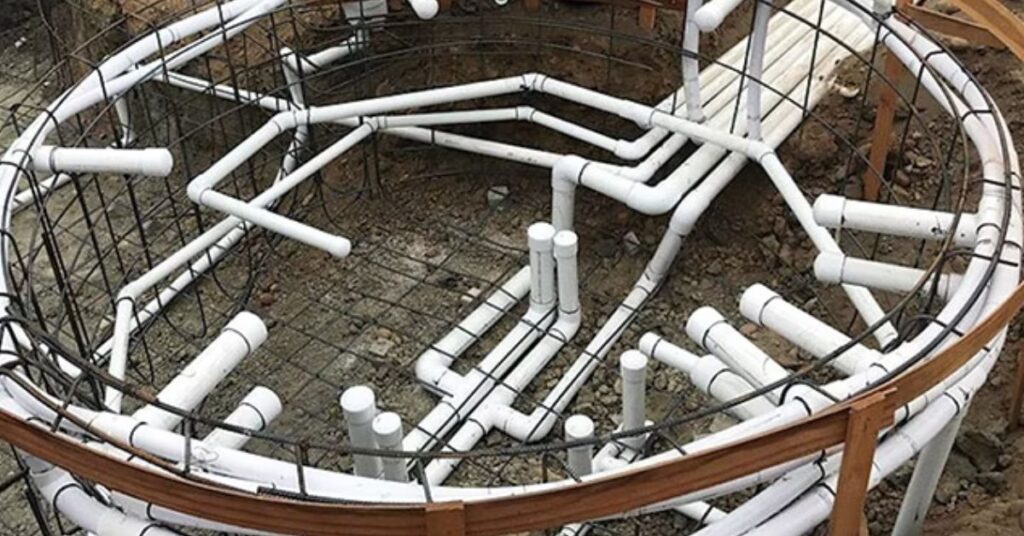Hot tubs are a luxurious addition to any home, offering a relaxing and therapeutic experience. However, before installing a hot tub, many homeowners wonder whether it requires plumbing. This blog will explore the different types of hot tubs, their plumbing needs, and considerations for installation to help you understand the requirements and plan accordingly.
Types of Hot Tubs
Hot tubs can generally be categorized into two main types: portable hot tubs and in-ground hot tubs. Each type has different plumbing requirements and installation processes.
- Portable Hot Tubs:
- Description: Portable hot tubs, also known as above-ground hot tubs, are self-contained units that can be placed on a level surface, such as a deck or patio. These hot tubs are pre-fabricated and come in various sizes and designs.
- Plumbing Requirements: Portable hot tubs typically do not require permanent plumbing connections. They are designed to be filled with a garden hose and have a built-in filtration and heating system. Water is recirculated and filtered within the unit, eliminating the need for complex plumbing installations.
- In-Ground Hot Tubs:
- Description: In-ground hot tubs are custom-built into the ground or a designated structure. They are often made of concrete, fiberglass, or other durable materials and can be integrated into a pool or landscaped area.
- Plumbing Requirements: In-ground hot tubs require more extensive plumbing work. They need permanent water supply lines, drainage systems, and often have more sophisticated filtration and heating systems. Plumbing lines must be run to and from the hot tub, and professional installation is usually required to ensure proper connections and functionality.
Plumbing Requirements for Portable Hot Tubs
Portable hot tubs are designed for easy installation and minimal plumbing work. Here are the basic steps involved:
- Site Preparation:
- Ensure the chosen location is level and can support the weight of the filled hot tub. A concrete pad, reinforced deck, or a sturdy patio is typically suitable.
- Ensure access to a nearby electrical outlet for the hot tub’s power requirements.
- Filling the Hot Tub:
- Connect a garden hose to a water source and fill the hot tub to the recommended water level. This process is straightforward and does not involve any permanent plumbing connections.
- Draining the Hot Tub:
- Portable hot tubs come with a built-in drain valve. To drain the water, attach a garden hose to the valve and direct the water to an appropriate drainage area, such as a lawn or sewer connection.
Plumbing Requirements for In-Ground Hot Tubs
In-ground hot tubs require more complex plumbing installations. Here’s an overview of the process:
- Planning and Design:
- Work with a professional to design the hot tub and plan the plumbing layout. This includes determining the location of water supply lines, drainage systems, and electrical connections.
- Obtain necessary permits and ensure compliance with local building codes and regulations.
- Water Supply and Drainage:
- Install water supply lines to provide a constant source of fresh water to the hot tub. This may involve connecting to your home’s main water line or a dedicated outdoor water source.
- Install a drainage system to handle wastewater. This typically involves connecting to your home’s sewer system or a designated drainage area. Proper drainage is crucial to prevent waterlogging and ensure the hot tub can be emptied and refilled as needed.
- Filtration and Heating:
- In-ground hot tubs often have more advanced filtration and heating systems. These systems require plumbing connections for water intake and output. Work with a professional to ensure these systems are installed correctly and function efficiently.
- Electrical Connections:
- In-ground hot tubs require electrical connections for pumps, heaters, and other components. Hire a licensed electrician to handle the electrical work and ensure it meets safety standards.
Considerations for Hot Tub Installation
Whether you choose a portable or in-ground hot tub, consider the following factors to ensure a smooth installation process:
- Professional Installation: While portable hot tubs are designed for DIY installation, hiring a professional can ensure the job is done correctly and safely. For in-ground hot tubs, professional installation is essential due to the complexity of the plumbing and electrical work.
- Location: Choose a location that is easily accessible, offers privacy, and is close to a water source and electrical outlet. Consider the weight of the filled hot tub and ensure the surface can support it.
- Maintenance: Regular maintenance is crucial to keep your hot tub functioning properly. This includes checking water chemistry, cleaning filters, and inspecting plumbing connections.
- Permits and Regulations: Check with your local building department for any permits or regulations related to hot tub installation. This is especially important for in-ground hot tubs, which may require more extensive permitting.
Read More: Can You Use Plumbing Solder for Electrical?
Conclusion
Whether a hot tub requires plumbing depends on the type of hot tub you choose. Portable hot tubs are designed for easy installation with minimal plumbing needs, primarily involving filling and draining with a garden hose.
In contrast, in-ground hot tubs require more complex plumbing installations, including water supply lines, drainage systems, and advanced filtration and heating systems. By understanding the plumbing requirements and considering professional installation, you can ensure your hot tub is set up correctly and ready for you to enjoy a relaxing soak.
